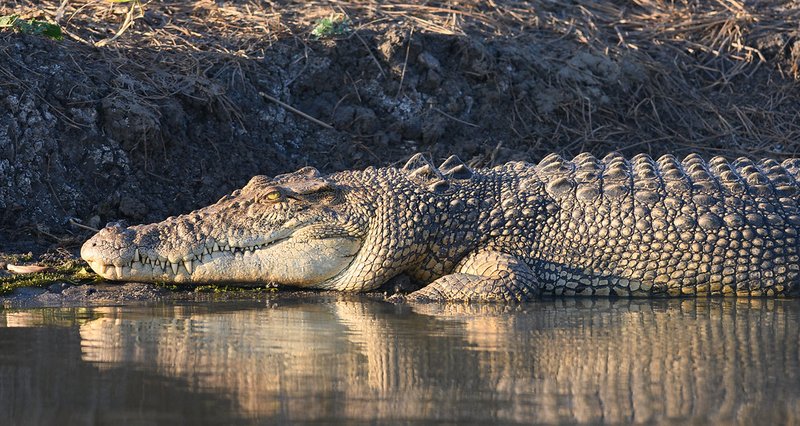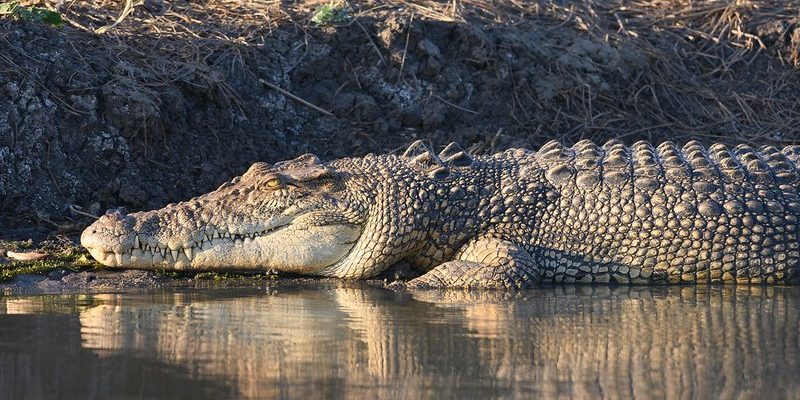
In many indigenous cultures, the saltwater crocodile isn’t just an animal; it’s a key figure in local myths and stories. To these communities, the crocodile embodies the essence of the natural world and serves as a powerful reminder of the balance between man and nature. This symbolism is rich and varied, reflecting the unique relationships different cultures have with this magnificent creature.
Cultural Significance in Indigenous Communities
In Australia and parts of Southeast Asia, saltwater crocodiles are often viewed as sacred beings. Aboriginal Australians, for instance, see these creatures as totem animals, representing strength and resilience. They often appear in Dreamtime stories, which are Indigenous narratives explaining the creation of the world and its inhabitants. You might be wondering why these stories matter. Well, they serve as a way to pass down knowledge from generation to generation, reinforcing cultural identity.
Saltwater crocodiles are also crucial in the ecosystem, acting as both predator and prey. This role can symbolize a balance between life and death, connecting the spiritual and physical worlds. In many cases, they are viewed as guardians of water sources, highlighting the importance of water in sustaining life.
Additionally, these reptiles can be seen in various art forms, from paintings to sculptures. Artists utilize the saltwater crocodile to express themes of nature, survival, and spirituality. It’s fascinating how a creature, so often feared, can represent so much more.
Symbol of Power and Strength
Saltwater crocodiles are often seen as symbols of power, especially in the regions they inhabit. Their ability to thrive in harsh conditions mirrors the resilience humans need to overcome their own challenges. This connection to power is why you might see the crocodile featured in logos or emblems for sports teams or brands.
In many cultures, strength is celebrated, and the saltwater crocodile exemplifies this trait. The sheer size and ferocity of the crocodile serve as a reminder of nature’s force. You might recall stories where overcoming a crocodile is a rite of passage, symbolizing a young person’s transition into adulthood.
Think about it: defeating such a formidable creature signifies bravery and skill. It’s not just about hunting; it’s about understanding your environment and respecting its dangers. This relationship with the crocodile fosters a sense of pride and courage among those who live in its domain.
Mythology and Folklore
Many cultures have woven saltwater crocodiles into their myths and folklore. For instance, in Papua New Guinea, the crocodile is often associated with the creation of life and is revered for its role in mythology. One popular tale describes how the crocodile transformed into a human, bridging the gap between the animal kingdom and humanity.
Such stories resonate deeply, illustrating the respect and awe communities have for these creatures. They remind us that, while crocodiles are fearsome, they are also part of the interconnected web of life. Myths can serve as moral lessons, teaching about the relationship between humans and nature.
These tales often emphasize the need for harmony with the environment. By incorporating saltwater crocodiles into their stories, cultures stress the importance of living respectfully alongside nature’s powerful forces. You might say these myths serve as cautionary tales—urging people to recognize their position in the world.
Representation in Modern Media
The saltwater crocodile has also made its way into modern media, including movies, documentaries, and literature. Think of blockbuster films that might portray these creatures as villains or monsters. While this can be entertaining, it shapes public perception in complex ways.
You might recall documentaries that highlight the beauty and grace of these animals in their natural habitat. When portrayed positively, saltwater crocodiles become symbols of raw beauty and survival. This duality in representation can spark interest in conservation efforts, encouraging audiences to learn more about these creatures.
These portrayals can also lead to misunderstanding, as many may view crocodiles only as dangerous beasts. Here’s the thing: sensationalized depictions can overshadow their cultural significance, reducing them to mere villains instead of the powerful symbols they truly are.
Conservation Efforts and Their Cultural Impact
As modern society becomes increasingly aware of environmental issues, the importance of conserving saltwater crocodiles has garnered attention. Their status as a vulnerable species highlights the need for protective measures, and this urgency resonates with cultural beliefs about respect for nature.
Conservation programs often engage local communities, integrating traditional knowledge with contemporary practices. This collaboration can reinforce cultural ties to the saltwater crocodile and boost local economies through eco-tourism. Imagine a local tour guide sharing stories about these magnificent creatures while leading a group through their habitat—it’s a way to educate and preserve cultural stories simultaneously.
Furthermore, involving indigenous peoples in these conservation efforts honors their ancestral connections to the land and its creatures. It becomes a celebration of culture, identity, and ecological responsibility. You see, when communities rally around protecting the saltwater crocodile, they’re not just saving a species; they’re preserving their history and identity.
The Future of the Saltwater Crocodile in Culture
As we move forward, the future of the saltwater crocodile in culture and symbolism will likely continue to evolve. With ongoing climate change and habitat loss, it is crucial for communities to adapt their narratives and conservation efforts to engage younger generations.
Education plays a huge role in this. By instilling respect for these creatures in children, communities can ensure that the cultural significance of the saltwater crocodiles endures. Engaging storytelling, art, and environmental education provide tools to keep this relationship alive.
Moreover, as globalization brings various cultures closer, the saltwater crocodile can serve as a bridge. Sharing stories and symbolism from different cultures can foster understanding and appreciation for this magnificent creature. It becomes a global symbol of strength and resilience, reminding us all of our responsibility to protect our planet.
In conclusion, the saltwater crocodile is more than just a fearsome predator; it’s a profound symbol in cultures worldwide. From representing power and strength to embodying important lessons in mythology, this incredible creature continues to inspire and connect people. As we work towards a future where the saltwater crocodile thrives, we also preserve the rich cultural narratives that honor it. Let’s embrace these stories and ensure they live on for generations to come.

